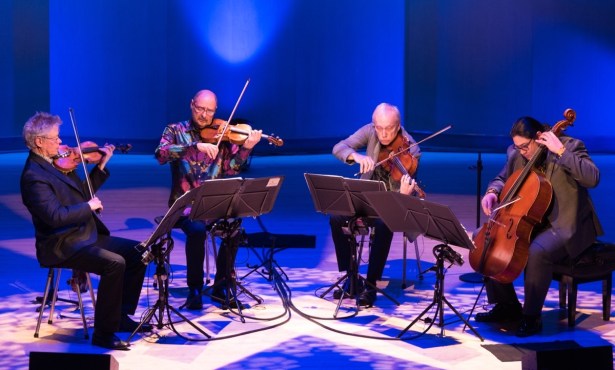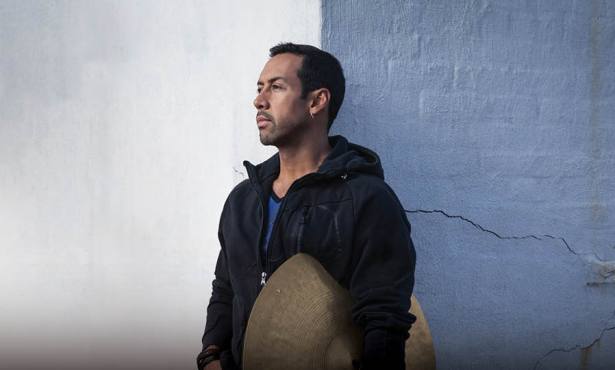Music Academy of the West’s Summer Fest Continues
Academy Orchestra Performed Mahler Saturday, July 11.
From ground zero to the upper echelon balcony seats, the Granada Theatre rumbled on Saturday, July 11, with bass trombone, ringing triangle, and super strings. The Music Academy of the West’s Academy Orchestra played Kalevi Aho’s Gejia and Mahler’s Symphony No. 5, led dramatically by the Finnish and Grammy Award-winning guest conductor, Osmo Vänskä, who has an American football referee kind of stance, as if marking the field goal “It’s Good” with both arms in a large “H” configuration. When his right arm is open wide, his left hand convulses begging the orchestra for more. The orchestra played the two pieces in a forte to quintuplet forte spectacle creating a new level of decibel loudness.
Kalevi Aho’s Gejia (Chinese Images for Orchestra)
Born in Finland 1949, contemporary composer Aho visited China in 2011 on invitation from the country’s National Center for the Performing Arts. He attended a traditional Chinese Opera in Beijing and then later visited the village of Wangba, home of the ethnic Gejia people. Inspired, he wrote a symphonic tone poem fusing elements of traditional Chinese music (pentatonic scales, poem form lyrics, glissandos, and Beijing style portamento) into a Western high art 15-minute tapestry.
It’s a piece with a strong opening, and the Academy Orchestra was a pulsive ruckus orchestral tutti that sounded like a Chinese New Year festival–stabs of upward glissandi and twangy percussion without the dancing dragons. Next came eerie pentatonic strings and busy orchestral happenings. Aho managed to transform the western instruments into authentic Chinese counterparts: harp into a konghou (Chinese harp) and Zheng (Chinese Zither); the violin into Erhu (Chinese fiddle), timpani into dagu (Chinese large drum played with two sticks), and xylophone into tam-tam (Chinese gong) for extra zest. Under Vänskä’s direction, the piece was rhapsodic and seemed to be a hot pot of Chinese pentatonic and percussive motifs, atonal sensibilities, and Stravinsky flair.
Gustav Mahler’ Symphony No. 5 in C-Sharp Minor
Gustav Mahler is the archetype symphonic conductor-composer, master of action- packed orchestration, and the inspiration behind the Star Wars sound. Yet his orchestration genius is not that he exploits the instruments registers, like Stravinsky did in his Rite of Spring, or changes the application of instruments such as in Arho’s Geija, but that he writes extremely idiomatically and complements the strengths of his instruments with others to create rich sound colors; his music always sound full bodied and balanced even if there is a solo instrument.
The Fifth symphony starts off with a solo trumpet and then develops into an ominous string section. Mahler’s melodies are long and bittersweet like dark chocolate, with just a few tannins of chromatic notes. The waltzes in the second and third movements are passionate and full of sensual innuendo, and his climaxes always seem to include a regal brass section with a ringing triangle. The fourth movement starts off with a dreamy string section with harp sprinkled arpeggios.
The last minute of the symphony built up into an orchestral fortissimo tutti thunderstorm. Vänskä waved his arms with percussive hops, and pushed the MAW’s Academy Orchestra to an extraordinary finale–a standing ovation, an extra strong finish, and the crowd said “It’s Good!!”



